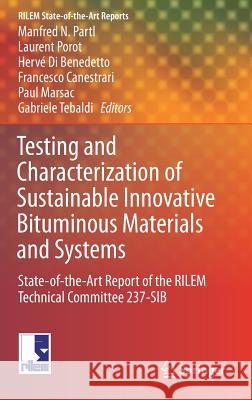Testing and Characterization of Sustainable Innovative Bituminous Materials and Systems: State-Of-The-Art Report of the Rilem Technical Committee 237- » książka
topmenu
Testing and Characterization of Sustainable Innovative Bituminous Materials and Systems: State-Of-The-Art Report of the Rilem Technical Committee 237-
ISBN-13: 9783319710228 / Angielski / Twarda / 2018 / 300 str.
Testing and Characterization of Sustainable Innovative Bituminous Materials and Systems: State-Of-The-Art Report of the Rilem Technical Committee 237-
ISBN-13: 9783319710228 / Angielski / Twarda / 2018 / 300 str.
cena 685,93
(netto: 653,27 VAT: 5%)
Najniższa cena z 30 dni: 655,41
(netto: 653,27 VAT: 5%)
Najniższa cena z 30 dni: 655,41
Termin realizacji zamówienia:
ok. 22 dni roboczych
Bez gwarancji dostawy przed świętami
ok. 22 dni roboczych
Bez gwarancji dostawy przed świętami
Darmowa dostawa!
Kategorie:
Kategorie BISAC:
Wydawca:
Springer
Seria wydawnicza:
Język:
Angielski
ISBN-13:
9783319710228
Rok wydania:
2018
Wydanie:
2018
Numer serii:
000419455
Ilość stron:
300
Waga:
0.63 kg
Wymiary:
23.39 x 15.6 x 1.91
Oprawa:
Twarda
Wolumenów:
01
Dodatkowe informacje:
Wydanie ilustrowane











